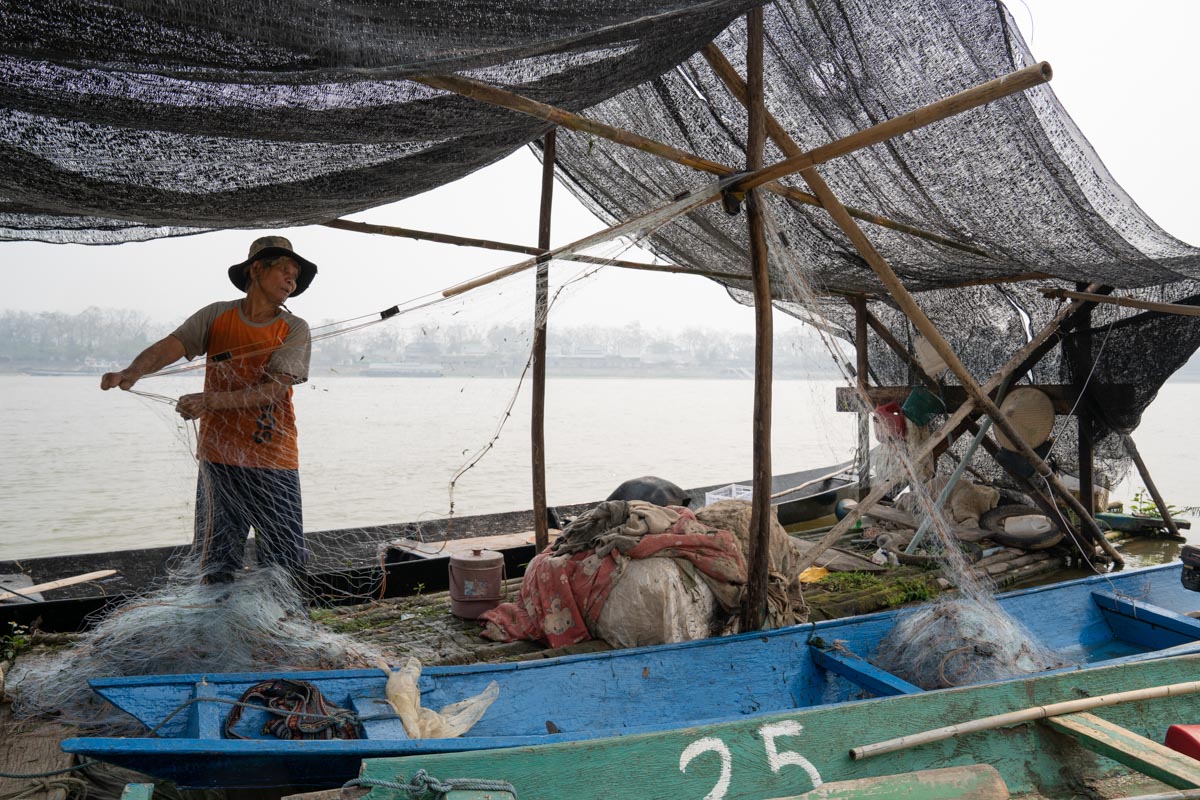Ituri: Training in Positive Masculinity to Prevent Sexual Violence – United Nations Peacekeeping

Report on Capacity Building for Gender Equality and Peace in the Democratic Republic of Congo
A recent initiative in Bunia, Democratic Republic of Congo (DRC), highlights a targeted effort to advance key Sustainable Development Goals (SDGs) through community-level engagement. A training program organized by the MONUSCO Gender Section for the Mixed Technical Cell for Positive Masculinity (CTM+) directly addresses SDG 5 (Gender Equality) and SDG 16 (Peace, Justice and Strong Institutions) by empowering local actors to combat sexual and gender-based violence.
Strategic Interventions for SDG 5: Gender Equality
The core objective of the program is to achieve gender equality and empower women and girls by challenging and transforming harmful social norms. This aligns directly with the targets of SDG 5.
Capacity Building on Core Gender Concepts
Seventeen members of the CTM+ received intensive training designed to strengthen their ability to prevent sexual violence. The curriculum focused on foundational principles for promoting gender equality, including:
- The concept of gender equality and its practical application.
- The significance of UN Security Council Resolution 1325 on Women, Peace, and Security.
- Key national and international legal instruments protecting women’s rights.
- The principles of positive masculinity as an alternative to “toxic masculinity,” emphasizing shared responsibilities, respect, and non-violence.
The Role of the CTM+ in Achieving SDG Target 5.2
The CTM+, a structure established by the Congolese government, is a critical local institution for achieving SDG Target 5.2: “Eliminate all forms of violence against all women and girls in the public and private spheres.” Its mission is to:
- Promote positive masculinity through widespread awareness campaigns.
- Support couples and families in fostering equitable and non-violent relationships.
- Identify and address household practices that perpetuate the vulnerability of women.
As one participant, Évodie Madhira, noted, the training provided the impetus to challenge the normalization of domestic violence and educate women about their rights, thereby contributing to a cultural shift away from the acceptance of violence.
Promoting SDG 16: Peace, Justice, and Strong Institutions
The initiative is set against the backdrop of armed conflict in the Ituri province, where sexual violence is used as a weapon of war. The program is therefore a direct contribution to building more peaceful, just, and inclusive societies as envisioned in SDG 16.
Combating Violence and Strengthening Justice
By equipping community leaders to prevent sexual violence, the program addresses SDG Target 16.1 (Significantly reduce all forms of violence and related death rates everywhere). The training on legal frameworks empowers CTM+ members to advocate for justice and combat the impunity that often surrounds these crimes, supporting SDG Target 16.3 (Promote the rule of law at the national and international levels and ensure equal access to justice for all).
Building Effective and Inclusive Local Institutions
The support for the CTM+ is an investment in strengthening effective, accountable, and inclusive institutions at the local level (SDG Target 16.6). The CTM+ brings together institutional and community actors, including teachers, lawyers, and representatives of women’s associations, to serve as agents of change. This collaborative structure is essential for ensuring that peacebuilding efforts are locally owned and sustainable.
A Partnership Model for Sustainable Development (SDG 17)
This initiative exemplifies SDG 17 (Partnerships for the Goals) through its multi-stakeholder approach. The collaboration involves:
- The United Nations (via MONUSCO) providing technical expertise and resources.
- The Congolese Government providing the national strategic framework.
- Local civil society (the CTM+ members) leading implementation and community mobilization.
This partnership ensures the transfer of knowledge and builds local capacity to address complex challenges. By embodying the values they promote within their own homes and communities, these trained actors will drive sustainable change, transforming mentalities to build a society where equality serves as a bulwark against violence, thus contributing to a holistic and integrated SDG agenda in the DRC.
1. Which SDGs are addressed or connected to the issues highlighted in the article?
The article primarily addresses issues related to three Sustainable Development Goals (SDGs):
-
SDG 5: Gender Equality
This is the central theme of the article. The entire initiative described, from the training on positive masculinity to combating sexual violence, is aimed at achieving gender equality and empowering women and girls. The text explicitly mentions “gender equality,” “women’s rights,” and the goal of building “more balanced relationships.”
-
SDG 16: Peace, Justice and Strong Institutions
The article is set in the context of a conflict-affected area (Ituri, Democratic Republic of Congo) where sexual violence is used as a “weapon of war.” It discusses challenges like “impunity” and the role of institutions like the UN peacekeeping mission (MONUSCO) and a government-established structure (CTM+) in preventing violence and promoting peace.
-
SDG 17: Partnerships for the Goals
The article highlights a multi-stakeholder partnership. It describes a collaborative effort between the “Congolese government” (which launched the national strategy), the United Nations (“MONUSCO’s Gender Section” organized the training), and “civil society” actors (community members, women’s associations) to achieve common goals.
2. What specific targets under those SDGs can be identified based on the article’s content?
Several specific targets can be identified within the aforementioned SDGs:
-
Under SDG 5 (Gender Equality):
- Target 5.1: End all forms of discrimination against all women and girls everywhere. The article addresses this by training community members to challenge harmful social norms, such as the belief that domestic violence is a “proof of love,” and promoting “equality as a bulwark against violence.”
- Target 5.2: Eliminate all forms of violence against all women and girls in the public and private spheres. This is a core focus, with the training designed to “prevent sexual violence” and equip participants to show women that what they are experiencing is “unacceptable violence with serious consequences.”
- Target 5.c: Adopt and strengthen sound policies and enforceable legislation for the promotion of gender equality. The article directly references this by mentioning the “national strategy launched by the Congolese government” and the training on “main national and international legal instruments regarding women’s rights,” including UN Security Council Resolution 1325.
-
Under SDG 16 (Peace, Justice and Strong Institutions):
- Target 16.1: Significantly reduce all forms of violence and related death rates everywhere. The initiative aims to tackle the “alarming levels of sexual violence” in Ituri, a form of violence directly linked to the ongoing armed conflict.
- Target 16.3: Promote the rule of law at the national and international levels and ensure equal access to justice for all. The article points to the challenge of “impunity” and seeks to address it by educating local actors on “national and international legal instruments,” which is a foundational step toward ensuring justice for victims.
- Target 16.a: Strengthen relevant national institutions… to prevent violence. The article describes MONUSCO’s support for the “Mixed Technical Cell for Positive Masculinity (CTM+),” a “structure established by the Congolese government,” as a way to build the capacity of a national institution to prevent gender-based violence.
-
Under SDG 17 (Partnerships for the Goals):
- Target 17.16: Enhance the global partnership for sustainable development, complemented by multi-stakeholder partnerships. The entire project is an example of this target in action, showcasing a partnership that mobilizes and shares knowledge between an international organization (MONUSCO), a national government (Congolese government), and local community actors (CTM+ members).
3. Are there any indicators mentioned or implied in the article that can be used to measure progress towards the identified targets?
Yes, the article mentions or implies several indicators that can be used to measure progress:
-
Indicators for SDG 5 Targets:
- Existence of legal frameworks (Implied for Target 5.c): The mention of a “national strategy launched by the Congolese government in August 2022” serves as an indicator that a legal/policy framework is in place to promote gender equality (related to Indicator 5.c.1).
- Prevalence of violence (Implied for Target 5.2): The article refers to “alarming levels of sexual violence.” A reduction in the number of incidents of sexual and physical violence against women would be a key indicator of progress (related to Indicators 5.2.1 and 5.2.2).
- Change in social norms (Implied for Target 5.1): The commitment of a participant to show women that domestic violence is “unacceptable” implies that a shift in attitudes and beliefs about gender roles and violence is a desired outcome and a measurable indicator, likely through surveys or qualitative assessments.
-
Indicators for SDG 16 Targets:
- Number of trained personnel (Mentioned for Target 16.a): The article explicitly states that “seventeen members of the Mixed Technical Cell for Positive Masculinity (CTM+) benefited from three days of training.” This is a direct output indicator of strengthening institutional capacity.
- Number of awareness campaigns (Mentioned for Target 16.1): The article states that the trained beneficiaries will now “organize awareness campaigns in their respective communities.” The number and reach of these campaigns can be tracked as an indicator of prevention efforts.
- Existence of independent national institutions (Mentioned for Target 16.a): The establishment and operationalization of the CTM+ in Ituri since January 2025 is an indicator of the existence of a specialized national institution to combat violence.
-
Indicators for SDG 17 Targets:
- Number of multi-stakeholder partnerships (Implied for Target 17.16): The initiative itself, a collaboration between MONUSCO, the Congolese government, and civil society, serves as a qualitative indicator of a partnership for sustainable development.
4. Create a table with three columns titled ‘SDGs, Targets and Indicators” to present the findings from analyzing the article.
| SDGs | Targets | Indicators Identified in the Article |
|---|---|---|
| SDG 5: Gender Equality |
5.1: End all forms of discrimination.
5.2: Eliminate all forms of violence against women and girls. 5.c: Adopt and strengthen sound policies and enforceable legislation. |
– Changes in social norms and attitudes regarding violence against women. – Reduction in the prevalence of sexual and gender-based violence. – Existence of a “national strategy” and training on “national and international legal instruments.” |
| SDG 16: Peace, Justice and Strong Institutions |
16.1: Significantly reduce all forms of violence.
16.3: Promote the rule of law and ensure equal access to justice. 16.a: Strengthen relevant national institutions to prevent violence. |
– Number of awareness campaigns organized to prevent violence. – Efforts to address “impunity” through knowledge of legal instruments. – Number of trained local actors (17 members trained). – Existence and operationalization of a national institution (CTM+). |
| SDG 17: Partnerships for the Goals | 17.16: Enhance multi-stakeholder partnerships. | – Existence of a collaborative initiative between the UN (MONUSCO), the Congolese government, and civil society actors. |
Source: peacekeeping.un.org

What is Your Reaction?
 Like
0
Like
0
 Dislike
0
Dislike
0
 Love
0
Love
0
 Funny
0
Funny
0
 Angry
0
Angry
0
 Sad
0
Sad
0
 Wow
0
Wow
0

















































































